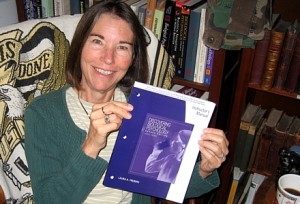When I taught my first college class (I was 23 and a grad student at UCLA teaching at Pasadena City College), I would have LOVED to have what is now called an Instructor’s Manual to help prepare my courses. I’m not sure when such things became available. My first real experience with them was when I contracted to write one for a former professor’s textbook in the mid-1990s. Times change, and today’s professor, like most workers, is being asked to do more with less. People want to provide the best course possible, but with research demands, short-cuts are always welcome.
So when we set out to write the Instructor’s Manual for Discovering Biological Psychology 2e, I tried to get back into the mindset of a new instructor instead of me–with my 30 plus years of experience (I basically walk into the room with my computer and powerpoints–no notes). I know of a number of people teaching the biopsych course at various institutions who never had a course in it (not a position I would enjoy), and I thought, how can we make this doable?

The Print Copy of Our DBP Instructor's Manual
Well, first on the list would be lecture notes. I remember writing my own laboriously–one of the more time-consuming parts of the job. I really like the fact that Cengage still prints out their ancillaries–most publishers only provide these digitally–so you could literally rip out these pages and plop them on the podium, writing your own notes in the margins. To make things even easier, we have keyed each point of the lecture outline to the correct textbook pages (so a professor could tell a student, “Check out page whatever for the whole story”) and to the powerpoint slides that we provide.
I’m especially excited about including callouts for clicker questions that we wrote for each lecture and for the youtube and other online videoclip recommendations we found. Frankly, it took me a huge amount of time to compile youtubes that were appropriate. I tried to include those that were in the 2-3 minute range, although some were longer, so that they illustrated a point without taking up the whole class time. I’m hoping that faculty will find these really useful. I tried out most of the clicker questions in my own classes last Spring, so I could see what worked and what didn’t.
The manual also includes supplemental “stories” to enrich lecture, along with online resources and suggested reading. We really tried to do “course in a box.” Hope it worked!

